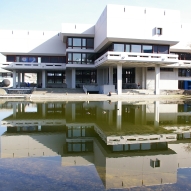| Lizenz: Veröffentlichungsvertrag für Publikationen ohne Print on Demand (12MB) |
- URN zum Zitieren dieses Dokuments:
- urn:nbn:de:bvb:355-epub-526494
- DOI zum Zitieren dieses Dokuments:
- 10.5283/epub.52649
Zusammenfassung (Englisch)
In fast growing cells, up to 60% of total transcription is devoted to ribosomal RNA synthesis. In eukaryotes a specialized enzyme, RNA polymerase I (Pol I), synthesizes a polycistronic precursor rRNA which is the 35S ribosomal RNA (rRNA) in the yeast S. cerevisiae. Whereas Pol II and Pol III use similar mechanisms to initiate transcription, the processes underlying Pol I promoter recognition, ...

Übersetzung der Zusammenfassung (Deutsch)
In schnell wachsenden Zellen beträgt der Anteil der ribosomalen RNA (rRNA) Synthese bis zu 60% der gesamten zellulären Transkription. In Eukaryoten synthetisiert ein spezialisiertes Enzym, RNA Polymerase (Pol I), einen polycistronischen rRNA Vorläufer. In der Bäckerhefe Saccharomyces cerevisiae ist dies die 35S prä-rRNA. Während Pol II und Pol III ähnliche Mechanismen zur Transkriptionsinitiation ...




 Downloadstatistik
Downloadstatistik